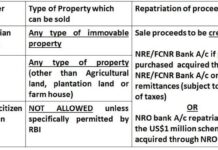Risks And Rewards Of Transfer Pricing
Transfer pricing is the economic value which is attached to the transferral of goods or services between two parties. In a broader sense, transfer pricing is the price which is paid for the transfer of good from one economic unit to another unit when both the units are located in different nations but belong to same MNC.
Arm’s Length Principle
The arm’s-length principle defines that the amount of money which is charged by one related party to another for a product must be the same as the price in the open market. It is as if both the parties are not related, instead they are two different companies. It is done so that there will be no disagreement between bot the related parties. The concept of an arm’s length deal is applied to ensure that both the related parties involved in the transaction are working on their self-interest and not under any kind of pressure from other parties involved.

Transfer Price is different from Arm’s Length Price
Transfer price is not the same as Arm’s length price. Transfer price can be described as the real price which is charged between the related enterprises in an international dealing. Transfer pricing comes into play when two units of the same multinational company situated in two different countries transfer goods or deliver services to one another. Those two units will not deal at arm’s length principle and, as a result, the transactions between these two parties will not be based on market forces. The difference between transfer price and arm length price gives the tax advantage and tax is calculated on arm length price.
Objective Of Transfer Pricing
Bring Down The Tax Burden
As has been mentioned before, the transfer price is the amount charged on the transfer of goods, services, and technology between related entities belonging to the same multinational company. It helps in minimizing the tax burden as the transaction between two related entities is not open for market considerations.
Helps in shifting profits
The effect of transfer price is that it shifts the profit from an entity under one jurisdiction to another entity under another jurisdiction. The main purpose of applying this method is that it helps in avoiding tax and also in taking major profits away and leaving very little for local associated parties. Companies also use this to avoid foreign exchange limitations.
Improving business efficiency
Transfer pricing also helps in improving business efficiency and simplifying the accounting policies and procedure. Companies can save hours of time, money, and workforce, with increased efficiency and smooth accounting, resulting in higher profitability and better concentration on business plans.
Reduce high tariff charges
Corporates make use of transfer pricing in order to bring down higher tariff duties. They ship goods into countries that have high tariff rates at nominal transfer prices so that the company would not have to pay high duties as the duties will be calculated on a very small transfer price. Similarly, they also transfer overpriced goods to the countries with very low tax rates so that companies could earn the high margin of profits.
Risks involved with using Transfer Pricing
While transfer pricing certainly offers a number of benefits for international corporations, this method is not without its fair share of disadvantages and risks. Given below are some of the risks involved with using transfer pricing methods by multinational companies:
- Both the related parties involved might get into a disagreement over the transfer of good and pricing as both the parties would be working under different jurisdictions and hence difference business and financial policies.
- The parties involved in a transfer pricing transaction might have to incur lots of additional expenditures. They might have to pay additional costs in terms of time, money, and manpower in order to implement transfer prices and keeping proper accounting records in order to support transfer pricing mechanisms. Basically, transfer pricing is a very complicated method and takes a lot of time to apply appropriately.
- While it is easier to assess the transfer price for tangible goods, setting prices for intangible can be very difficult as it can be very problematic to get the right and profitable balance for parties working under different jurisdictions as intangible goods will not give measurable rewards.











